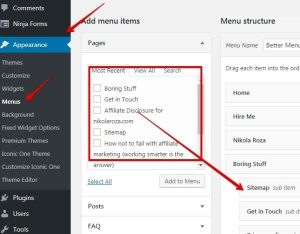Integrity is often found as a core value in companies and I believe one of the most often to fall out of alignment. The challenge with integrity is found in it’s subtle nature of subjectivity. I’ve learned that what I find to be acting in integrity may be in direct conflict with what someone else considers acting in integrity. This delta can create an integrity slide in the organization that is easy to go unnoticed. Here are some of the key factors to creating, implementing and operationalizing a culture of integrity.
Clearly define what integrity means to the organization
By definition integrity is the quality of being honest and having strong moral principles. Those strong moral principles need to be defined in the organization. What are the organization’s strong moral principles? What is the company’s stance on honesty? Where does the line begin and end? What is a lie technically? Does lying through omission count? What is the company stance on interoffice politics and common tactics like undermining ideas?
One of the key reasons I believe integrity is the easiest to fall out of alignment is because organizations say integrity, but rarely take the time to define what that means tactically to the organization. It’s one thing to say the organization has integrity and then to find out there’s a brooding culture of toxicity once the doors are closed. The truth is that an organization like that may never be able to live up to any true standards of integrity. But it’s a totally different story when you have a leadership team who wants to set the gold standard for integrity and then must figure out how to communicate the vision of what that means and then hold everyone accountable to it. These organizations have a chance at making a shift that can last.
Agree to deal with the tough stuff up front and do it
How does the organization handle tough conversations about integrity? Who gets involved? What’s the process for evaluation of integrity? How will the nuances of integrity be handled? Where does someone report an integrity infringement they don’t feel comfortable talking about more publicly? Does everyone feel empowered to speak up? What if progress is being held back by individuals who are not in alignment with the company’s integrity standard?
Every organization will have a run in where integrity comes into question. So it’s important to have measures for prevention of integrity slide and dealing with it when it happens. The best way to enforce integrity is to ensure it has a living, breathing voice inside the organization. This means everyone is the voice of integrity in the room and feels empowered to call out an integrity slide when they see it, no matter where in the organization it’s happening. This doesn’t have to be a big deal when it happens, a simple “let’s evaluate that against our integrity standards and make sure we’re all in agreement that it aligns” can go a long way. But pointing out the slide isn’t enough. It can also require coaching someone through that slide and finding their way back to a place of integrity. This is where leaders have an opportunity to have a positive conversation and create an internal shift.
Create a tolerance policy
While the subtleties of integrity can be complex, the bottom line of it is simple. How will we handle it when people aren’t honest? How will we handle it when someone’s actions don’t align with our principles? What’s our sliding scale we’ll use to measure how far out of compliance the actions are? And at what point do we take action? To what extent?
There are really only two questions at play. Were they honest? And did their actions align with our principles of integrity? If the answer is no to either of those questions there are two options; coach and remediate the team member or reprimand them up to and including termination. I recommend a zero tolerance policy for questions of honesty. For me, when someone on the team can’t be trusted to be honest, especially in the face of adversity they simply can’t be on the team. We need to be able to trust each other to do the right thing. When there are questions on alignment with principles there is an opportunity for coaching and remediation. We can help someone come into alignment with a principle. A principle might be something like, we have the tough conversations early, for example. The question of how early is too early and when is the right time can be coached easily. Keep in mind that a blanket no tolerance policy simply won’t work. Integrity leaves far too much up to interpretation for that to be effective.
Train leaders on how to be the example
Leaders need coaching just as much as the rest of us. The subtleties of integrity require that we not assume everyone “gets it”. Instead, put integrity on the agenda and start having open conversations about real situations that are coming up and bringing integrity into question. You’ll likely have no shortage of opportunities for conversations and coaching on your principles from the day to day operations of the company. Then focus on how these leaders can handle these situations and highlight their management opportunities. Think in terms of scale and know that if one person is struggling with a principle they represent a much larger whole who also requires more clarity.
Remind leaders that it’s important to verbalize how they make decisions and deal with matters of integrity. For some leaders acting in integrity is so core that they don’t even think about it or realize they are setting a good example for their teams. Rather than letting these moments fly by step back and go into more detail with the team on what variables you were dealing with, how you chose between them and what the outcome of the decision was. These mentorship moments come rarely and it’s important to take advantage of them when they happen in the wild. By slowing down and walking people through the mental process of finding alignment with integrity there is more likelihood that they will be able to repeat that process and ultimately come to a more aligned outcome on their own in the future.
For many of us the questions of integrity come in the subtleties of how choices align with the principles of the organization’s leadership team. Instead of sweeping small infringements under the rug we can use them as an opportunity to expand our focus on integrity, redefine what it means for the organization and step into a more honest, principle driven workplace. An environment with integrity allows teams to thrive and innovate, unimpeded by toxicity in the workplace. That’s an environment where everyone can win.
Business & Finance Articles on Business 2 Community
(43)





